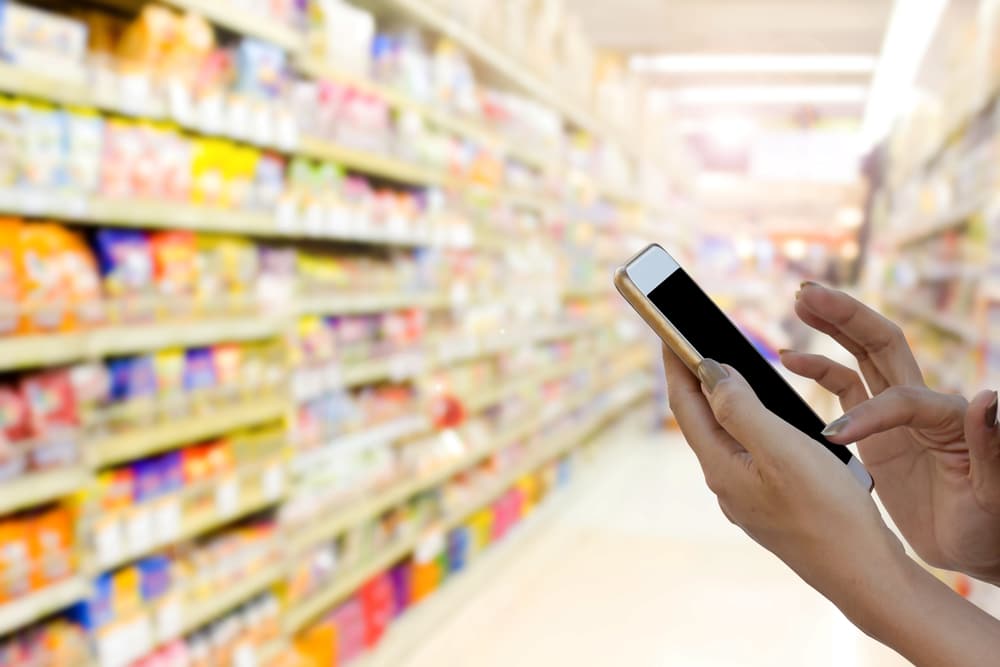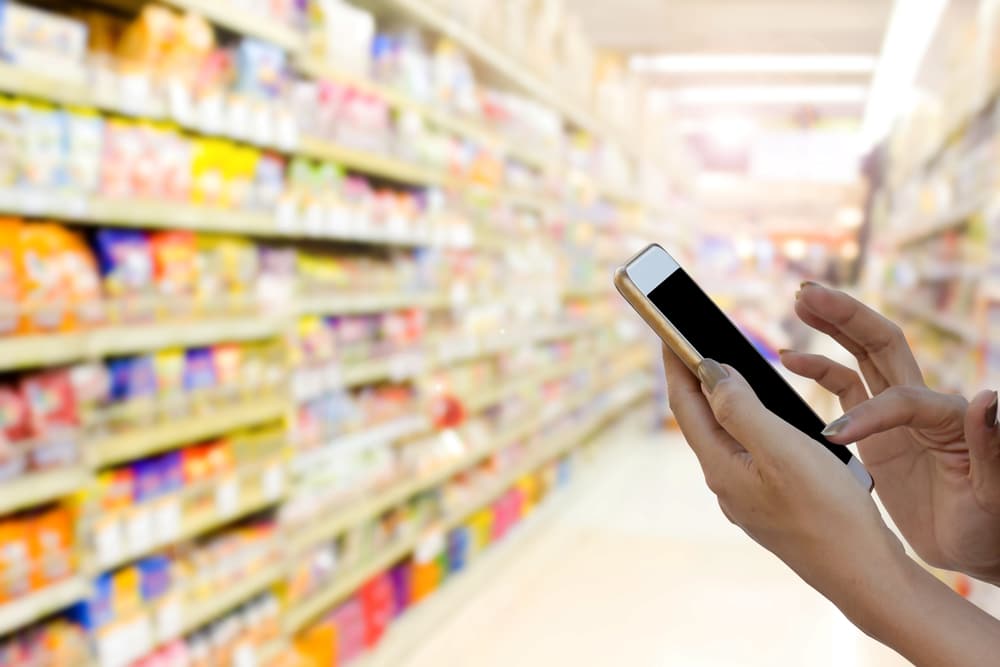Guiding consumers along the path to purchase with in-store advertising is one of the most effective ways to improve in-store sales. With in-store advertising, there is less room for distraction on the path to purchase. By leveraging mobile-driven marketing strategies that make in-store advertising capable, brands are able to travel with the consumer.
Encouraging consumers to use their mobile phone in the shopping aisle is one way to guide consumers because it narrows their focus. As their eyes are on the screen, they’re not likely to pay attention to a competitor’s in-store display. Incentivization programs also drive interaction with products, which primes the consumers to purchase. Following the purchase, the consumer can receive even more rewards for scanning their receipt. Shopping apps reach consumers at all stages of the in-store purchase journey, from the moment they enter a location to when they depart.
Five stages on the path to purchase
Marketing to the customer in the shopping aisle can be expensive for brands as it’s a prime spot for sales. In-store displays, shelf placement, and product visibility are all paramount for reaching consumers. A customer’s experience in a brick-and-mortar store typically involves these five stages:
- Awareness: The customer enters the store and some form of visual merchandising grabs their interest, whether it’s a display or a sample booth. At this point, the consumer may be aware of the brand, but their opinion is likely neutral.
- Interest: During this stage, many sales fall into the hands of competitors. Once the consumer decides to check out the advertised product, they may notice it’s placement next to possibly lower cost options and become aware of the competition.
- Consideration: At this stage, the consumer picks up the product, which primes them for sale. By physically touching the product, a subconscious sense of ownership is triggered within the consumer. This drives the consumer through to purchase.
- Intent: The consumer has decided to buy the product and has placed it in their cart. Here, the sale is mostly secure. However, there is still a risk that the consumer may choose to trade it out for something else before leaving. Cart abandonment is far more common online than it is in the shopping aisle.
- Evaluation: After the purchase, the consumer may choose to remain loyal to the brand. They may share their opinion of the product as well, becoming subtle brand ambassadors. Some CPG brands may be challenged in this area, as consumers don’t often leave reviews or share opinions about everyday products like cotton balls or bandages. In other industries, like cosmetics and food, these reviews are frequently influencing sales factors and must be cultivated.
 During every part of this purchase journey, the consumer will be inundated with ads from competing brands. The challenge of in-store marketing is to narrow the consumer’s focus to one brand and pull them to its location in the store. As an increasing number of consumers are using their mobile phones to shop, brands should focus on leveraging this medium to increase sales potential.
During every part of this purchase journey, the consumer will be inundated with ads from competing brands. The challenge of in-store marketing is to narrow the consumer’s focus to one brand and pull them to its location in the store. As an increasing number of consumers are using their mobile phones to shop, brands should focus on leveraging this medium to increase sales potential.
Mobile shopping apps can become a valuable part of guiding consumers down the path to purchase.
How mobile guides consumers to products in the shopping aisle
About 77% of consumers will use their mobile phone in the shopping aisle to find the information they need on a product. Many will take that mobile use a step further and use apps to assist them as they make purchases. Shopping apps help brands guide in-store traffic all along path to purchase. These apps may offer:
- Location-based awareness: Building brand awareness when a consumer is near a product will help drive sales. Shopkick leverages this technology by offering deals based on a consumer’s location. The consumer can enter their local retailer and pull up a listing of all participating items within the app, which may drive them to seek out those products.
- Interactions through gamification: Shopping apps are rewards-based programs so using them must fulfill two everyday consumer needs: convenience and entertainment. With Shopkick, consumers can track rewards easily. By getting the consumer to scan items with their phone to collect rewards, the consumer enjoys a gamified, entertaining experience that drives their desire to purchase.
- Heightened loyalty and advocacy: Purchases increase rewards. When the consumer redeems those rewards, the prolonged interaction associated with a product could drive them to leave a positive review. At the very least, it solidifies the branded experience and increases the chance of a future sale.
Mobile shopping apps can become a valuable part of guiding consumers down the path to purchase. They narrow the consumer’s focus to a brand’s products, while also incentivizing interactions to keep consumers engaged. Marketing in the shopping aisle is highly competitive. By using mobile apps to travel with the consumer as they shop, brands can gain an edge.
By working with Shopkick, our partners connect with household decision makers in the shopping aisle. For more information on how our app increases consumer engagement, contact us.
Image courtesy of ChompooSuppa





